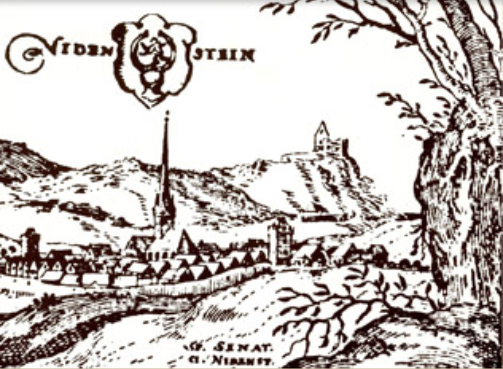Here are some intriquing stories about Knatz family members throughout history that might be worthly of further research.
Was a Knatz instrumental in protecting the wealth of the House of Rothschild?
Mayer Amschel Rothschild was born in 1743 or 1744. Little is known about the early Rothschild family. It was probably Mayer Amschel who first used the surname Rothschild which means “red shield” as the family in the 1560’s had built a house known as the “house with the red shield.” The early members of the family were small business men who primarily traded in cloth. Mayer’s parents died when he was 12 years old and he was sent to Hanover to work for one of his father’s business associates. It was in Hanover that Mayer would learn a trade that helped established his business [ the trading of rare coins and metals. That knowledge led him to develop a relationship with William, the Prince of Hesse-Kassel, a collector who became Mayer’s most important clients. William’s account record for June 1765 indicate transactions with the “Jew Mayer.” Although it is believed many transactions were not recorded, in 1769, Mayer was granted the title of Court Agent. The next year Mayer married the 16 year old daughter of a court agent to the Prince of Saxony, further solidifying his relationship with the aristocracy. Throughout the 1770’s and early 1780’s, Mayer Rothchild established himself as a leading antique dealer. The coin and metal business has brought him into contact with the Hessian mint and Prince William would often commission him to strike new metals. After 1790 records indicate that Prince William was a regular customer. By 1797, Mayer was the wealthiest Jew in the city of Frankfurt and as he accumulated wealth, his business shifted to banking.
It is now believed that the relationship with Prince William was the real foundation of the Rothschild fortune. Hesse-Kassel was a rich state and the wealth of the district was indistinguishable from the personal wealth of the prince. The accumulation of capital was a result of selling the services of the Hessian army to the highest bidder, usually Great Britain. The selling of mercenaries reached its zenith during the American Revolution. Prince William made arrangements for the mercenary business even before he succeeded his father’s as Landgrave of Hesse-Kassel. William received 76 Gulden ( about 7 British pounds) fpr each soldier, with an additional 25 Gulden for each man wounded and an additional 76 Gulden for each man killed. The money from Britain was not paid in cash but in Bills of Exchange paid to William’s London account. From the perspective of Mayer Amschel, there was money to be made by buying and selling the British bills. The finances of the Hesse-Kassel resembled those of a bank and Mayer worked hard to gain the Senior position among the banks serving William. In 1806, William, now William the First, Elector of Hesse, was disposed by Napoleon for his support of Prussia and he had to flee to Austria. Even while in exile, William I needed the services of a banker. Mayer corresponded regularly with one of William’s most senior officials, “Knatz.”. Evidence of this correspondence still exists In the Rothschild archives. To avoid notice by the French police, Mayer began to correspond in a crude code to keep information secret. Knatz became known as “Johann Weber.”. Austrian police records note:
